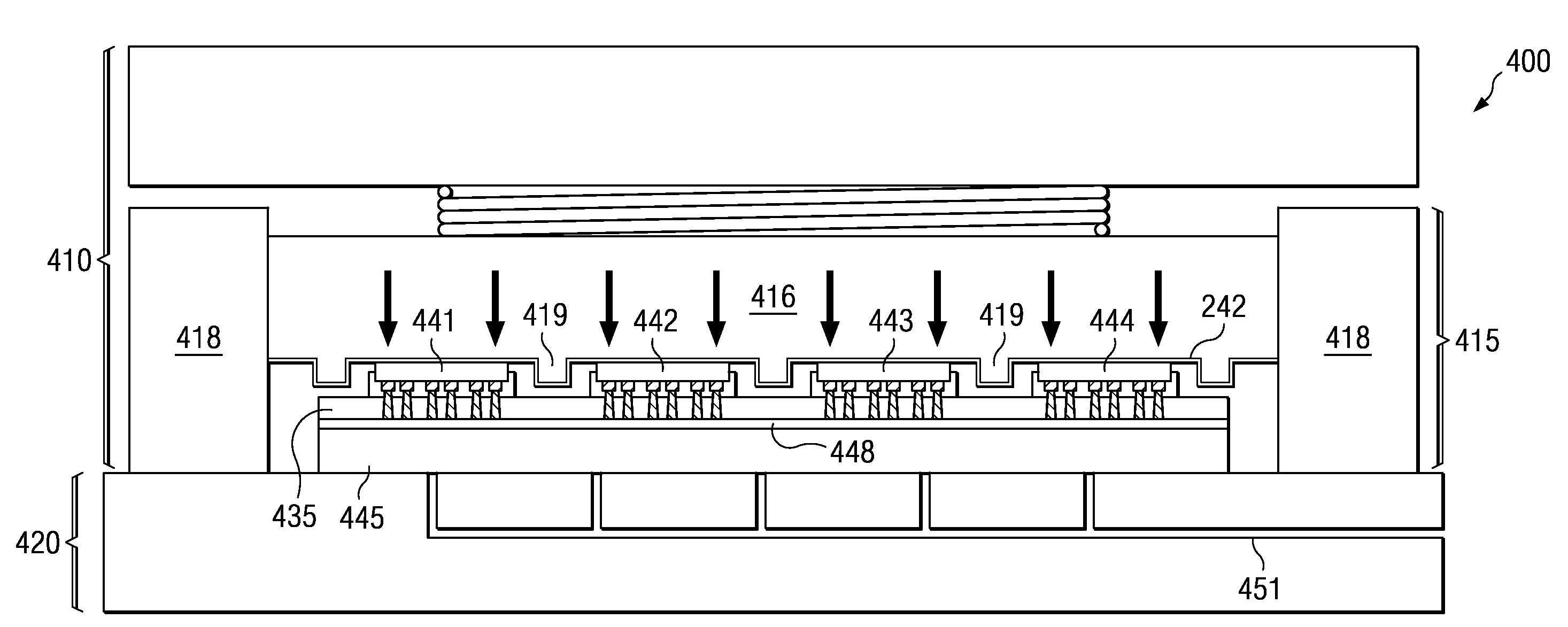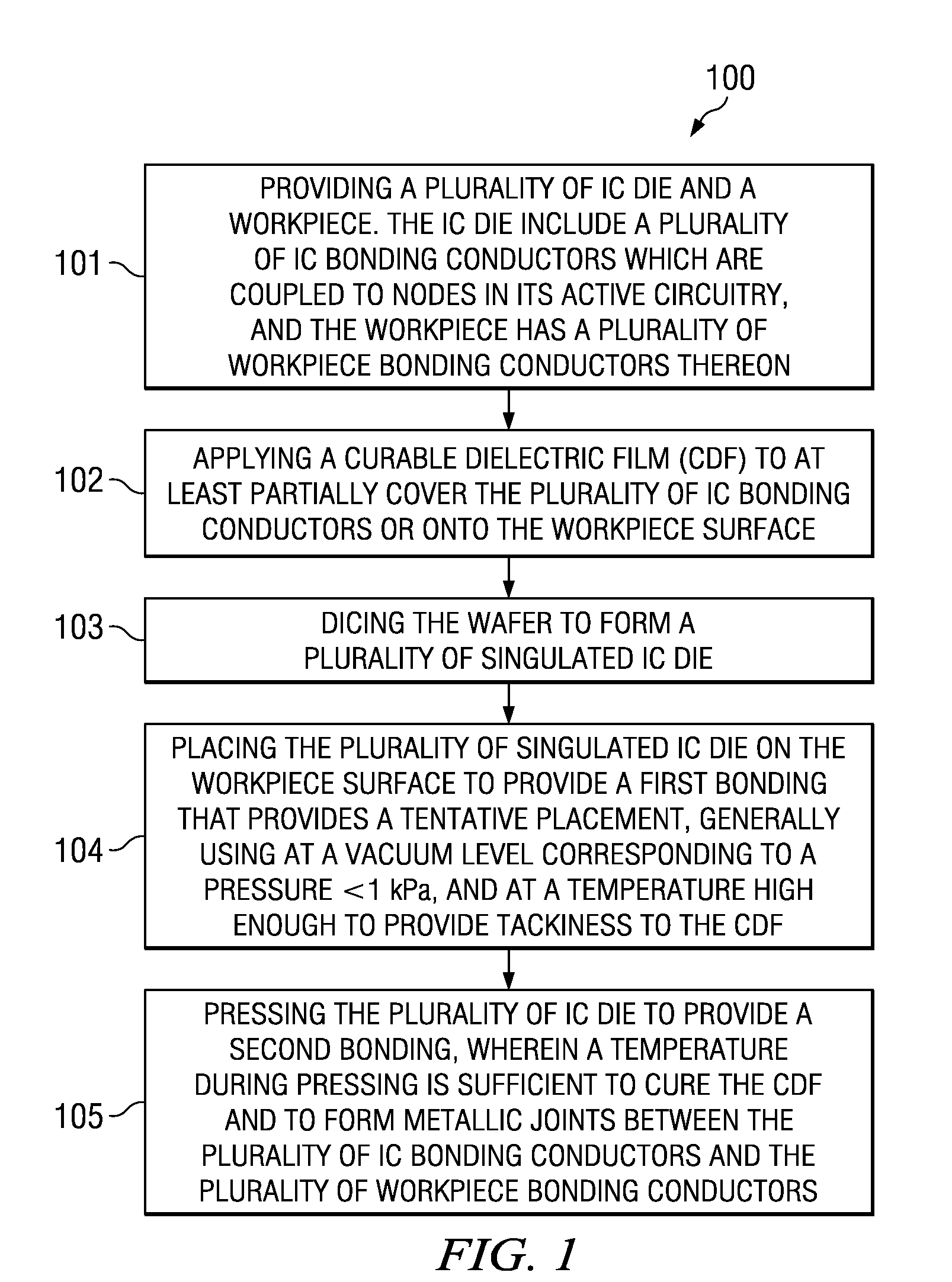Combined metallic bonding and molding for electronic assemblies including void-reduced underfill
a technology of electronic assemblies and metallic bonding, which is applied in the direction of manufacturing tools, mold control devices, and foundation moulding apparatus, etc., can solve the problems of significant density of underfill voids, loss of reliability, and various components contracting at different rates during bonding, so as to reduce voids and/or the size of voids, and reduce joint misalignment
- Summary
- Abstract
- Description
- Claims
- Application Information
AI Technical Summary
Benefits of technology
Problems solved by technology
Method used
Image
Examples
example
[0067]Embodiments of the present invention are further illustrated by the following specific Examples, which should not be construed as limiting the scope or content of embodiments of the invention in any way.
[0068]A series of experiments were performed to determine the effectiveness on underfill voiding by applying vacuum or no vacuum in combinations of the first and second bonding. The workpiece included solder bumps on copper land pads. It was found that air should be removed to <1 kPa (<7.5 torr) during the first bonding to obtain minimum voiding. Vacuum during the second bonding did not measurably reduce bonding as compared to using no vacuum for both the first and second bonding. It was concluded that once air remains in the layers through the first bonding, it did not remove upon the second bonding even with a vacuum. Significantly, if the first bonding is performed under vacuum, there is generally no advantage to second bonding with a vacuum. Void data obtained from the expe...
PUM
| Property | Measurement | Unit |
|---|---|---|
| pressure | aaaaa | aaaaa |
| pressure | aaaaa | aaaaa |
| tilt angle | aaaaa | aaaaa |
Abstract
Description
Claims
Application Information
 Login to View More
Login to View More - R&D
- Intellectual Property
- Life Sciences
- Materials
- Tech Scout
- Unparalleled Data Quality
- Higher Quality Content
- 60% Fewer Hallucinations
Browse by: Latest US Patents, China's latest patents, Technical Efficacy Thesaurus, Application Domain, Technology Topic, Popular Technical Reports.
© 2025 PatSnap. All rights reserved.Legal|Privacy policy|Modern Slavery Act Transparency Statement|Sitemap|About US| Contact US: help@patsnap.com



